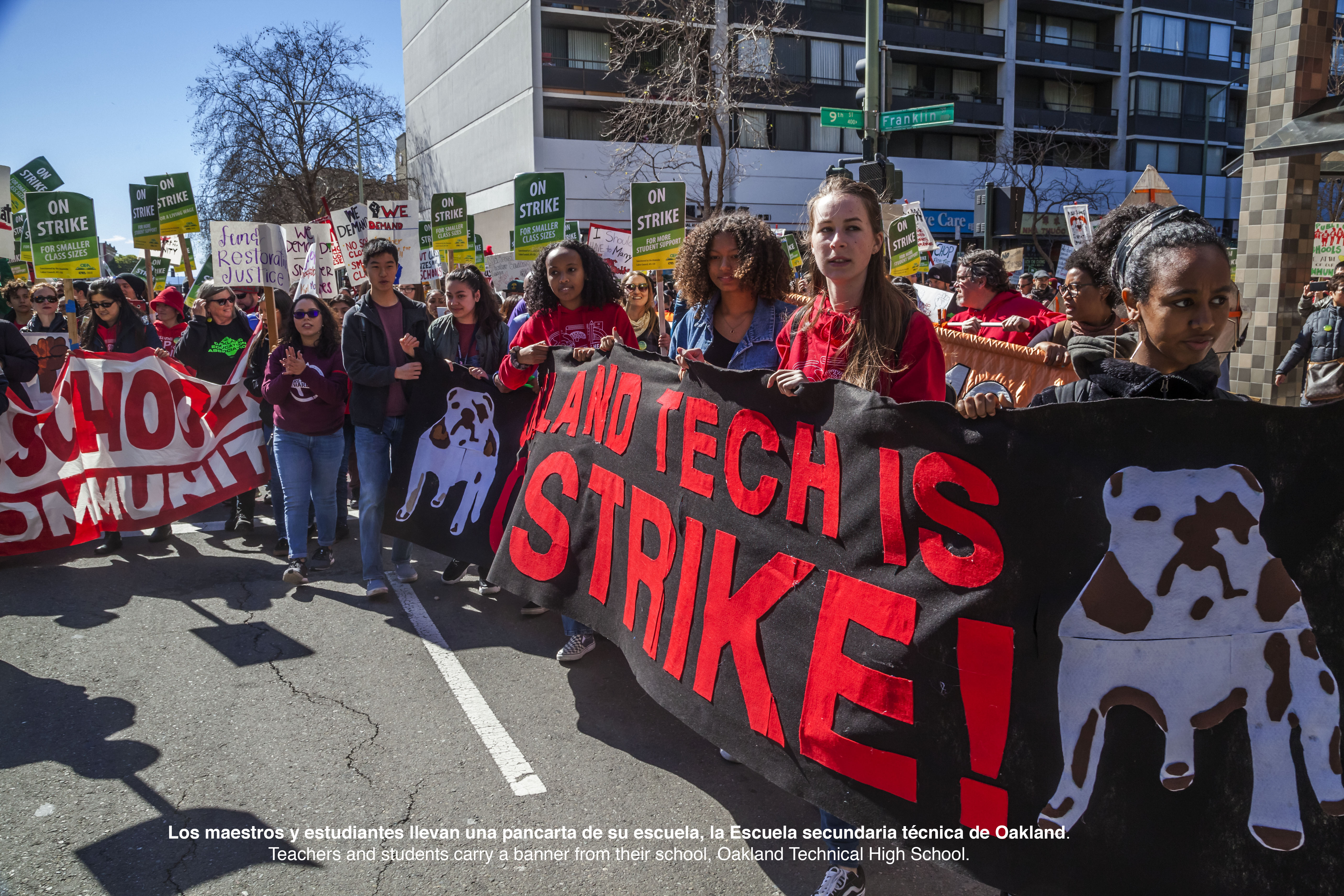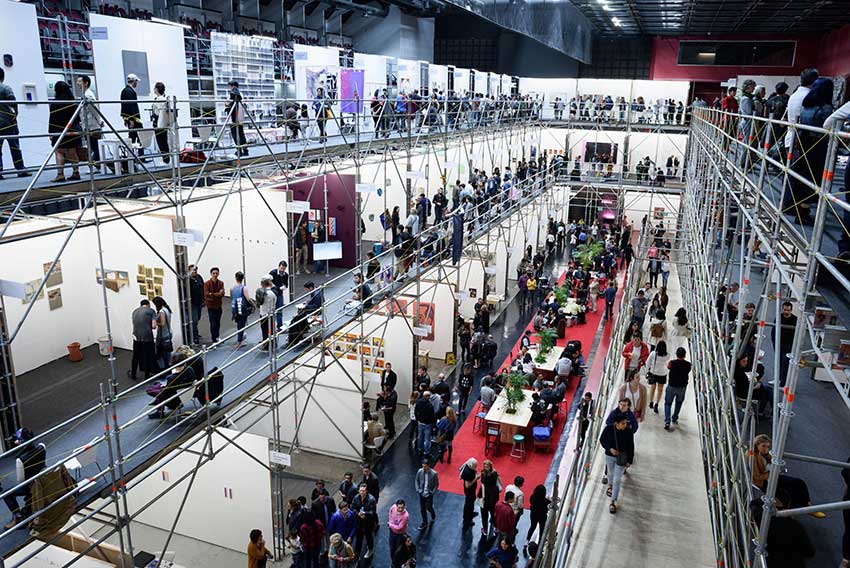by David Bacon
California growers have complained of a tight labor market for years, as a militarized border and a decade of mass deportations restrict the flow of migrants into the fields. Some growers, like Salinas’ D’Arrigo Brothers Co., have signed union contracts and provided better wages and benefits in order to attract a stable workforce. Others, however, are actively seeking to hold wages down. This recipe for confrontation has produced an escalating legal battle in Washington DC, and a walkout by hundreds of tangerine pickers in the Central Valley.
Growers have increasingly turned to H-2A visas for guest workers, with the decade ending in 2018 seeing a more than 370 percent increase, with no decline in sight. In Washington DC, the National Council of Agricultural Employers, a national lobbying organization for U.S. growers, filed suit in January against the U.S. Department of Labor to freeze the wages of H-2A guest workers at a level barely above the minimum wage.
H-2A workers are recruited by growers every year in other countries, mainly Mexico. They’re given visas for less than a year, which require them to work for the employer that contracts them. They must leave the country when their work is done. Growers have to advertise for local workers first, and can only bring in guest workers if none are available.
Companies using the H-2A program must apply to the U.S. Department of Labor, specifying the work, and the living conditions and wages workers will receive. Each year the Federal government sets state-by-state an Adverse Effect Wage Rate – the wage growers must pay H-2A workers. It is set at a level that supposedly won’t undermine the wages of local workers, but it’s usually just slightly above the minimum wage. In 2019 the AEWR wage in California is set to increase from $13.18/hour to $13.92. California’s minimum wage, for employers with more than 25 workers, will go to $12.00.
On Jan. 8, the day before the new H-2A wages were to go into effect, the NCAE was denied a temporary injunction to halt the increases. The organization then filed suit to roll back AEWR wages to 2018 levels. Michael Marsh, NCAE president and CEO, said the increases were “unsustainable,” and would cost growers “hundreds of millions of dollars.” Agribusiness is being “hammered by unfair retaliatory tariffs,” he charged, in a dig directed against Trump’s trade war with China.
The increases directly affect a sizeable chunk of the farm labor workforce. According to the Department of Labor’s National Agricultural Workers Survey, the best analysis of farm worker demographics for over two decades, there are about 2.5 million farm workers in the U.S., about three quarters of whom were born outside the U.S., and half of whom are undocumented. Last year growers were certified to bring in 242,762 H-2A workers – a tenth of the total workforce and a number that is rising rapidly. Holding down their wages would save growers a lot of money.
But halting the increase would also impact farm workers as a whole. Farmworker Justice, a Washington DC farm worker advocacy coalition, says the average family’s yearly income is $17,500-$19,999. A quarter of all farm worker families earned below the federal poverty line of $19,790.
Farmworker Justice and the United Farm Workers both requested to intervene in the NCAE suit on the side of the Department of Labor, upholding the wage increases. “The growers’ suit will affect farm workers across the country,” said UFW President Teresa Romero. “If H-2A wages are frozen, fewer farm workers already living here will want to work for them. Growers will have an excuse to bring in more H-2A workers. It’s becoming more like the bracero program.
Growers have challenged the formula used by DoL to calculate the yearly wage increase. Under President George W. Bush they knocked it out, but President Barack Obama reinstated it. Now the AEWR increase formula is being challenged again, under another grower-friendly administration. Last May 24 the secretaries of Agriculture, Homeland Security, State and Labor issued a “H-2A Agricultural Worker Visa Modernization Joint Cabinet Statement” promising to change the program rules “in a way that is responsive to stakeholder concerns and that deepens our confidence in the program as a source of legal and verified labor for agriculture.
While the suit would have a national impact, it is closely connected to California growers. President Tom Nassif of the California-based Western Growers Association belongs to President Trump’s agricultural advisory board, and prominent WGA member Dennis Nuxoll sits on the NCEA executive committee. NCEA President Michael Marsh was CEO of Western United Dairymen and an officer of the Almond Board of California, both headquartered in Modesto.
Farm worker advocates worry that the Trump administration’s Labor Department may not vigorously defend the wage increase against the growers’ legal challenge. “We would intervene in the NCEA suit no matter what,” said Bruce Goldstein, director of Farmworker Justice. “But we are clearly concerned about what position DoL will take in defending against it, in light of the President’s other anti-worker and anti-regulatory actions.”
The suit is one of a number of moves made by growers in the past two years to roll back H-2A wages and protections. At the instigation of the Washington [State] Farm Labor Association (WAFLA), one of the U.S.’s largest H-2A labor contractors, Washington State’s Employment Security Department and the U.S. Department of Labor effectively slashed the legal minimum for farm worker wages by up to $6 per hour. ESD and the Department of Labor agreed with WAFLA to remove an AEWR piece-rate minimum for picking apples, the state’s largest harvest, effectively lowering the harvest wage by as much as a third.
The assault on farm worker wages has also surfaced in Congress as Republicans in the House and Senate introduced bills in the last two years to also end protections for H-2A workers and expand their recruitment. Republicans representing California’s San Joaquin Valley in the House supported these bills, which failed, but two of those representatives were turned out of office in the midterm elections. What attitude their freshman Democratic replacements will take has yet to be seen. Some California Democrats, however, especially Senator Diane Feinstein, have a record of supporting growers’ use of the H-2A program
Senator Feinstein and Democratic Representative Zoe Lofgren, however, have reintroduced a bill, the Agricultural Worker Program Act of 2019, which would allow undocumented farm workers to gain legal status by working a minimum number of days, pass security checks, and meet other requirements. “The bill would minimize the need for employers’ use of the H-2A guest worker program by providing a meaningful opportunity for immigration status for the hard-working undocumented farmworkers who put food on our table,” said a statement from Farmworker Justice.
Grower efforts to cut wages have affected workers who are not H-2A visa holders as well. Low wages for farm workers even provoked a strike after New Years, at one of California’s largest agribusiness corporations, the Wonderful Company. On January 11 hundreds of field hands refused to go to work harvesting tangerines in Kern County orchards, after the piece rate they were being paid was lowered from $53 to $48 per bin.
Striking pickers told the media that a fast worker could harvest two bins a day. Assuming an 8-hour day, they would earn about $12 per hour. Some told UFW organizers that they often made less than the $12/hour legal minimum, a violation of state law.
“They’re also told to report to work at a given time, but the work sometimes doesn’t start for a few hours, and they’re not paid for waiting,” said UFW President Teresa Romero. She estimated that there were about 1800 workers on strike on January 11. “They tried to talk with the company, but the company refused to talk with them. We don’t know yet if the management will come to the table. The workers want to work, but they also want to be respected.”
A statement by Mark T. Carmel, director of corporate communications, said Wonderful was “disappointed that some of our third-party labor contractors decided to protest at one of our fields.” A month ago, however, the company said it was raising its wages to a $15/hour minimum in all its subsidiaries, including Wonderful Citrus, Wonderful Pistachios & Almonds, Wonderful Orchards, Wonderful Nurseries, POM Wonderful, JUSTIN Wines and Landmark Wines.
Wonderful’s billionaire owner, Los Angeles investor Stewart Resnick, called his workers “dedicated and hard-working employees … our greatest asset, and the reason for our tremendous success as a company.” Co-owner Lynda Resnick added “this substantial investment in our workers will have an immediate and meaningful impact on their lives.”
The Wonderful Company was known as Paramount Farms until it changed its name in 2015. Its parent corporation, Los Angeles-based Roll Global, also operates the FIJI Water and Teleflora companies. In a 2016 Mother Jones article, writer Josh Harkinson said the Resnicks “are now thought to consume more of the state’s water than any other family, farm, or company. They control more of it in some years than what’s used by the residents of Los Angeles and the entire San Francisco Bay Area combined.”
Paramount Farms had a long history of labor conflict. In 1999 it broke an effort by a thousand workers to join the Laborers Union, in its huge packing plant near Lost Hills on the west side of the San Joaquin Valley. At the time the company issued a press release saying that “employees are doing well and do not need a union,” and that its pay and benefits “are superior to most employers in the area.” In 2002, however, the National Labor Relations Board ruled that it had illegally threatened workers with firing, and had illegally fired Margarita Aviso and Leticia Ortiz for supporting the union.
Romero said that workers, meeting at the UFW’s historic “40 Acres” headquarters in Delano, on January 14 discussed the possibility of organizing a union, filing a petition for an election at Wonderful, and bargaining a contract. During the day the company offered to reinstate the $53/bin wage, and the pickers decided to go back into the orchards the following morning. A statement by Wonderful’s Mark Carmel said, “We’ve resolved the main concern raised by our third-party labor contractors and are currently paying the same bin rate for picking mandarins that we previously paid for clementines. Our workers are back on the job and operations have returned to normal.”
UFW Vice-President Armando Elenes felt they’d taken a big step. “They came out of the strike with real leaders and a good organization,” he said. The strikers are mostly indigenous Mixteco migrants from Oaxaca. Two years ago workers from the same indigenous farm worker community struck the Gourmet Trading Company’s grape vinyards, also over a cut in wages. They then voted for the UFW in a union election, and the company agreed to a union contract covering over 500 employees.
“Our main focus nowadays is trying to talk with the company to avoid conflict,” Romero explained. “But some growers take longer to understand than others that this is a better way. Stewart Resnick is a powerful man. But is he willing to get beyond this and recognize what workers want?”









